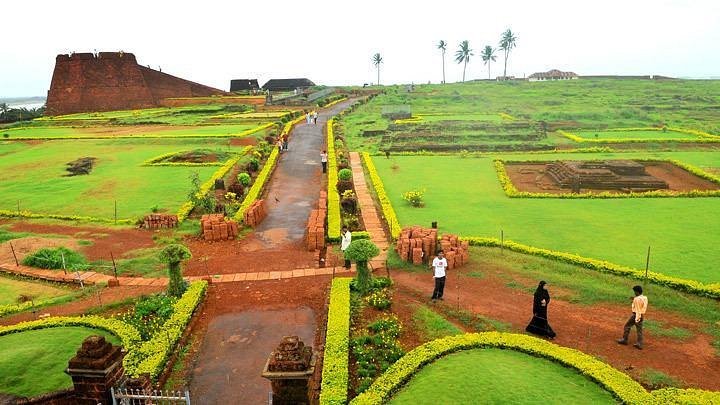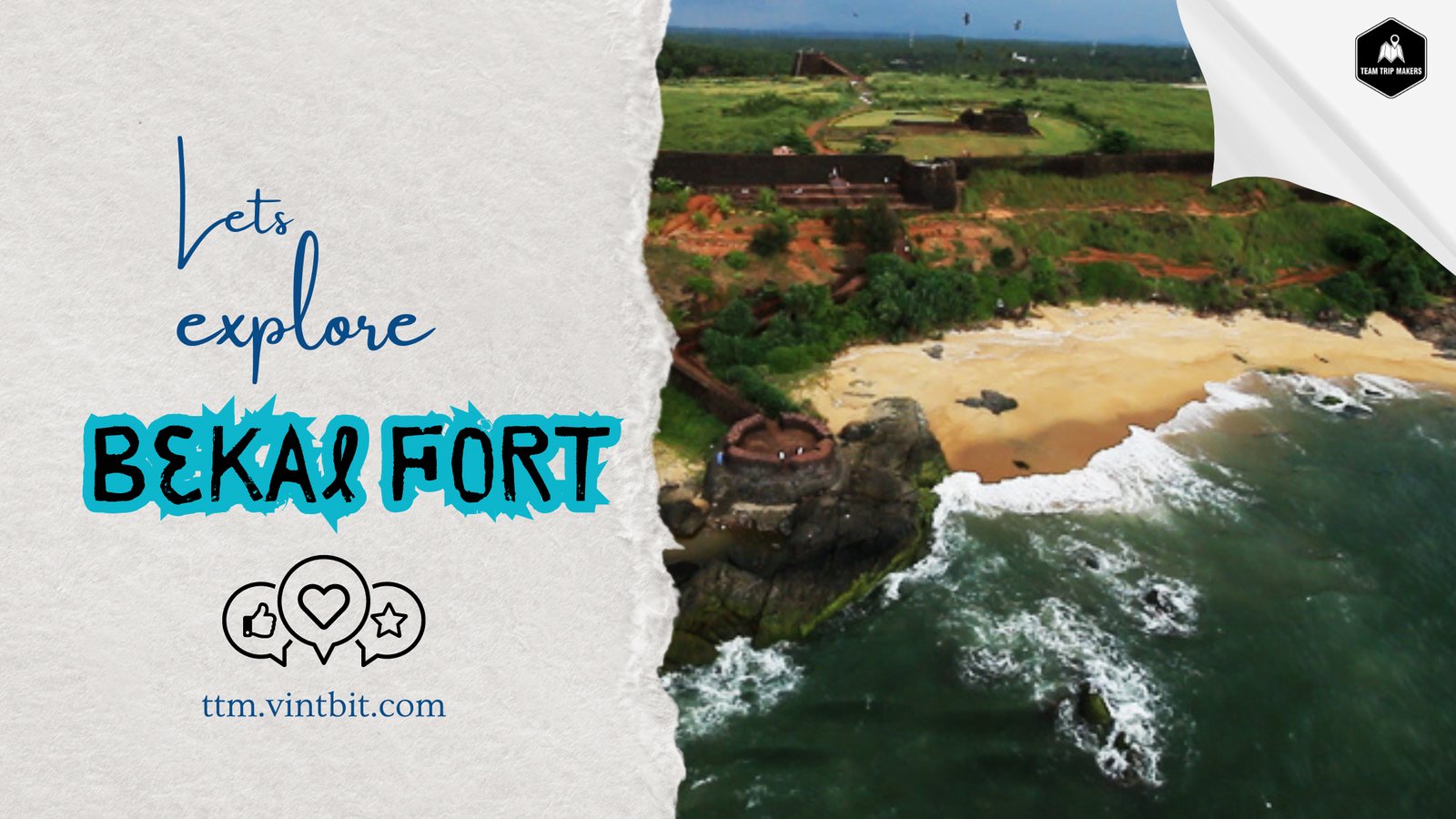The Bekal Fort, constructed in 1650 AD by Shivappa Nayaka of Keladi, is renowned for its unique keyhole-shaped architecture that blends Kerala’s traditional and military styles. The fort boasts grand laterite walls, observation towers, bastions, and a well-preserved moat as its prime features. Visitors can catch breathtaking views of the surrounding Arabian Sea and beaches from the observation towers. Located near the Anjaneya Temple, the fort is a popular attraction due to its impressive masonry and two striking Theyyam sculptures made from laterite.
HISTORY
During the Perumal Age, Bekal was under Mahodayapuram’s rule. Later, it fell under the control of the Kolathiri Royal Family in the 12th century, becoming a significant port town. The fortification of Bekal began in the 16th century, serving as a strategic stronghold against regional powers. After changing hands several times, it ultimately came under Mysorean control under Hyder Ali and Tipu Sultan. Following Tipu Sultan’s demise, the fort passed to the British East India Company. Today, it stands as a historical monument, reflecting the region’s rich past. Adjacent religious sites, like the Mukhyaprana Temple and an ancient mosque, symbolize the area’s religious diversity and harmony.
STRUCTURE
The fort appears to emerge from the sea and boasts three-quarters of its exterior surrounded by water. Unlike administrative centers, it lacks palaces or mansions. Notable features include a water tank, magazine, and an observation tower by Tipu Sultan offering panoramic views. Its defensive design, evident in the zigzag entrance and trenches, includes strategically placed holes in the outer walls for naval defense. Reminiscent of Dutch-built forts like Thalassery and St. Angelo in Kannur, its solid construction stands as a testament to its architectural prowess.

Things to See at Bekal Fort
Anjaneya Temple
The fort’s entrance has a temple dedicated to Lord Hanuman. It is thought that the shrine predates both the fort and itself. It is a popular destination for visitors and devotees alike, having recently undergone renovations.
Observation Tower
A set of stairs leads up to the tower, which is located in the center of the fort. It is thirty feet high with a circumference of almost eighty feet. The tower provides breathtaking views of the verdant surroundings on the other side of the Arabian Sea and its rocky shoreline.
Mosque
Just outside Bekal Fort is another sight to behold: a mosque constructed by Tipu Sultan.
Underground passages
Numerous subterranean tunnels inside the fort lead in various directions to the outside. There are still two of these tunnels underneath the surface.
Sea bastion
Admire breathtaking views of the Arabian Sea and the beach from the sea bastion perched atop the rocky projection of the fort.
Sunset
The fort is a well-liked location to catch unobstructed views of the setting sun.
How to reach
Air: The nearest airport is Mangalore International Airport, about 67 km away.
Rail: The nearest railway station is Kasaragod Railway Station, around 16 km away.
Road: Bekal Fort is easily accessible by road through buses and taxis available from Kasaragod and nearby cities.
Other Information
Timings : 8 am to 5:30 pm
Entry Fee : INR 20 per person



